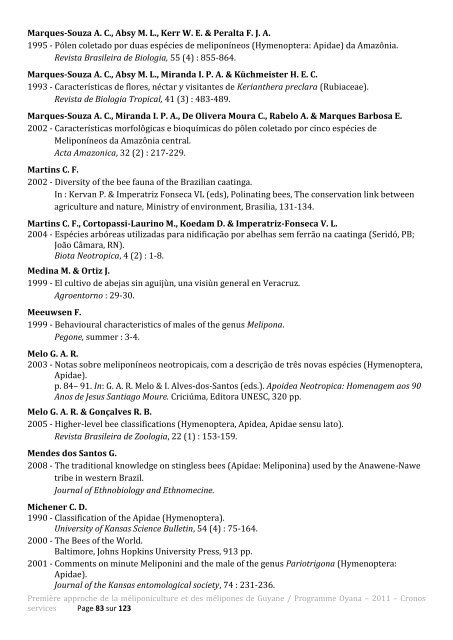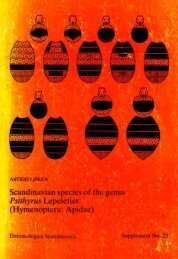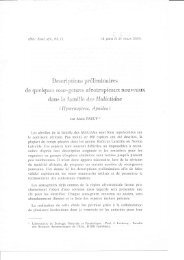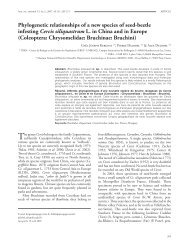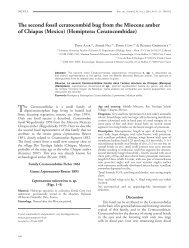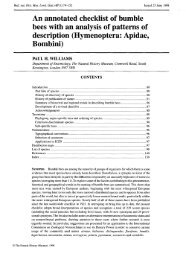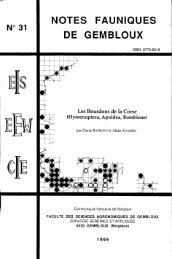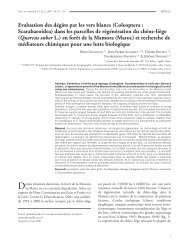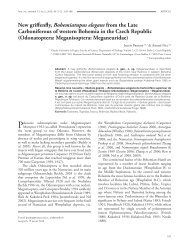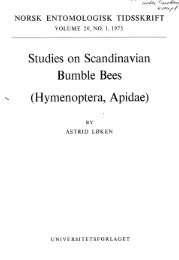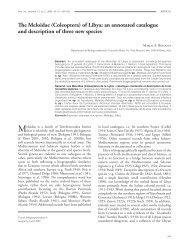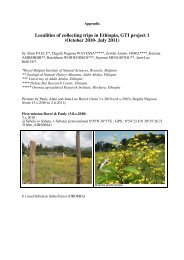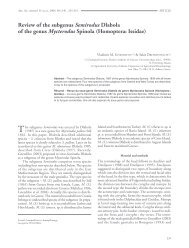Première approche de la méliponiculture et des mélipones de Guyane
Première approche de la méliponiculture et des mélipones de Guyane
Première approche de la méliponiculture et des mélipones de Guyane
- No tags were found...
Create successful ePaper yourself
Turn your PDF publications into a flip-book with our unique Google optimized e-Paper software.
Marques-Souza A. C., Absy M. L., Kerr W. E. & Peralta F. J. A.1995 - Pólen col<strong>et</strong>ado por duas espécies <strong>de</strong> meliponíneos (Hymenoptera: Apidae) da Amazônia.Revista Brasileira <strong>de</strong> Biologia, 55 (4) : 855-864.Marques-Souza A. C., Absy M. L., Miranda I. P. A. & Küchmeister H. E. C.1993 - Características <strong>de</strong> flores, néctar y visitantes <strong>de</strong> Kerianthera prec<strong>la</strong>ra (Rubiaceae).Revista <strong>de</strong> Biologia Tropical, 41 (3) : 483-489.Marques-Souza A. C., Miranda I. P. A., De Olivera Moura C., Rabelo A. & Marques Barbosa E.2002 - Características morfolôgicas e bioquímicas do pôlen col<strong>et</strong>ado por cinco espécies <strong>de</strong>Meliponíneos da Amazônia central.Acta Amazonica, 32 (2) : 217-229.Martins C. F.2002 - Diversity of the bee fauna of the Brazilian caatinga.In : Kervan P. & Imperatriz Fonseca VL (eds), Polinating bees, The conservation link b<strong>et</strong>weenagriculture and nature, Ministry of environment, Brasilia, 131-134.Martins C. F., Cortopassi-Laurino M., Koedam D. & Imperatriz-Fonseca V. L.2004 - Espécies arbóreas utilizadas para nidificação por abelhas sem ferrão na caatinga (Seridó, PB;João Câmara, RN).Biota Neotropica, 4 (2) : 1-8.Medina M. & Ortiz J.1999 - El cultivo <strong>de</strong> abejas sin aguijùn, una visiùn general en Veracruz.Agroentorno : 29-30.Meeuwsen F.1999 - Behavioural characteristics of males of the genus Melipona.Pegone, summer : 3-4.Melo G. A. R.2003 - Notas sobre meliponíneos neotropicais, com a <strong>de</strong>scrição <strong>de</strong> três novas espécies (Hymenoptera,Apidae).p. 84– 91. In: G. A. R. Melo & I. Alves-dos-Santos (eds.). Apoi<strong>de</strong>a Neotropica: Homenagem aos 90Anos <strong>de</strong> Jesus Santiago Moure. Criciúma, Editora UNESC, 320 pp.Melo G. A. R. & Gonçalves R. B.2005 - Higher-level bee c<strong>la</strong>ssifications (Hymenoptera, Api<strong>de</strong>a, Apidae sensu <strong>la</strong>to).Revista Brasileira <strong>de</strong> Zoologia, 22 (1) : 153-159.Men<strong>de</strong>s dos Santos G.2008 - The traditional knowledge on stingless bees (Apidae: Meliponina) used by the Anawene-Naw<strong>et</strong>ribe in western Brazil.Journal of Ethnobiology and Ethnomecine.Michener C. D.1990 - C<strong>la</strong>ssification of the Apidae (Hymenoptera).University of Kansas Science Bull<strong>et</strong>in, 54 (4) : 75-164.2000 - The Bees of the World.Baltimore, Johns Hopkins University Press, 913 pp.2001 - Comments on minute Meliponini and the male of the genus Pariotrigona (Hymenoptera:Apidae).Journal of the Kansas entomological soci<strong>et</strong>y, 74 : 231-236.<strong>Première</strong> <strong>approche</strong> <strong>de</strong> <strong>la</strong> <strong>méliponiculture</strong> <strong>et</strong> <strong>de</strong>s <strong>mélipones</strong> <strong>de</strong> <strong>Guyane</strong> / Programme Oyana – 2011 – Cronosservices Page 83 sur 123


